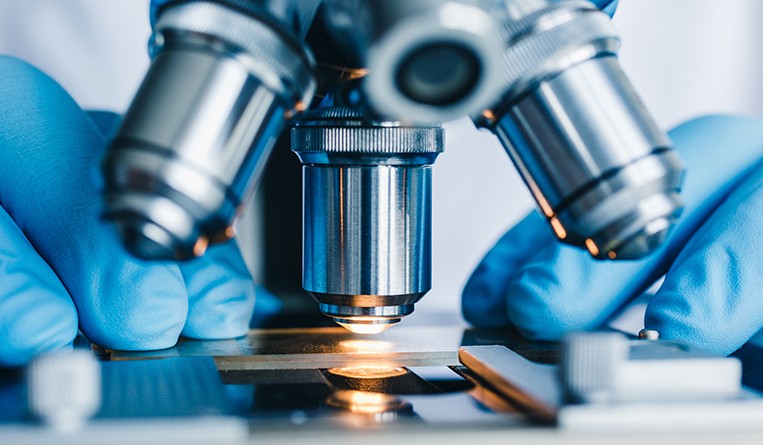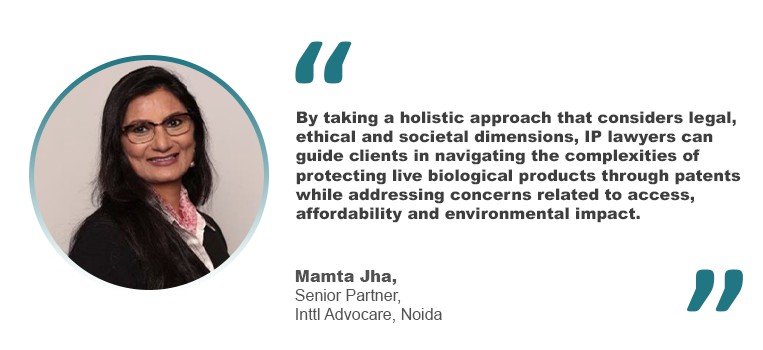The patentability of live biological products
27 September 2024

The discussions surrounding the patentability of live biological products are multifaceted, especially when considering both medical uses and non-medical uses. Excel V. Dyquiangco brings in insights from legal professionals in India, highlighting legal and ethical considerations.
The patentability of live biological products has become a focal point of legal, ethical and scientific discussions. A crucial facet of this debate revolves around the contrasting patentability requirements for therapeutic medical uses compared to using bacteria in lifestyle drugs and cosmetics. As a cornerstone of biotechnological advancements, the development of therapeutic medical applications using live biological products, such as genetically modified cells for personalized medicine to innovative gene therapies, raises the potential to revolutionize healthcare immensely. The patentability of these medical applications hinges on established criteria, including novelty, non-obviousness and utility.
For therapeutic medical uses, the focus lies on addressing unmet medical needs and demonstrating a clear and beneficial impact on patient outcomes. Stringent regulatory standards, including rigorous clinical trials and safety assessments, also serve as gatekeepers for innovative medical applications, shaping the landscape for patentability.
On the other hand, using live biological products in lifestyle drugs and cosmetics introduces a distinct set of considerations. Here, the focus shifts from therapeutic benefits to consumer-oriented outcomes such as enhanced beauty, skincare or overall well-being. Striking a balance between fostering innovation and ensuring the safety and ethical use of biological materials becomes a challenge in this context.
Niklas Mattsson, a partner and patent attorney at AWA in Stockholm, said that under the European Patent Convention (EPC), claims for therapeutical medical uses need specific wording to address the exclusion of medical treatment methods from patentability. He emphasized that these claims should be expressed as “product for use” to comply with Article 54(4) and (5). On the other hand, non-medical uses, such as cosmetic applications, may be expressed as either use or method claims.
According to Mattsson, if a non-medical purpose is mentioned in a product claim intended for medical uses, the EPO will view it as an indication of suitability rather than a limitation. This interpretation may result in the examiner considering the claim as not novel, as the product itself is already known.
“Taken together, however, it is possible to obtain patent protection in Europe for both medical and non-medical uses, as long as the claims are drafted in the proper way,” he added.” Here, care must be taken to separate the claims to medical uses from claims to non-medical uses so that the respective different claim formats may be used for the respective category.”
However, Mattsson noted that the practice is evolving at different speeds and in varying directions across European Patent Office (EPO) member states.

“In general, the focus in medical use claims on the intended use of products means that proving infringement is difficult,” he said. “For this reason, much emphasis is placed on the state of mind of the purported infringer, as well as statements and claims made when marketing and selling products.”
Proving infringement in a medical use claim becomes challenging, especially in situations where microbiologic products may create a grey area. For instance, if a product is sold as a food supplement without explicit statements regarding therapeutic effects, proving infringement in a medical use claim may be particularly difficult.
Facing legal and ethical considerations
Mamta Jha, a senior partner at Inttl Advocare in Noida,said that considering evolving patent law policies in India, there is a range of factors to consider that span across both legal and ethical dimensions when discussing such issues.
Regarding legal issues relating to the patentability of live biological products, apart from the requirements of novelty, inventiveness or non-obviousness, and industrial applicability, the following should also be considered:
- The live biological product in question sought to be patented must not be a mere discovery of living things or non-living substances occurring in nature (Section 3(c)). Further, the product must not relate to something immoral or against public order, harmful to human, animal or plant life, or harmful to the environment (Section 3(b)). Other considerations in terms of the limitations on patentability as prescribed under Section 3 of the Patents Act as discussed above should also be considered.
- Although microorganisms are excluded from the non-patentability list, a conjoined reading with Section 3(c) of the act implies that only modified microorganisms, which do not constitute discovery of living things occurring in nature, are patentable subject matter under the act.
- In light of the Dimminaco, Biogaia and Diamond Star Global cases, the product in question must be a sellable item with commercial value. The specification and claims must show novelty and inventive steps. Note that genetically modified strains, even derived from naturally occurring ones, can be patentable if they involve human intervention (genetic modification), meet requirements such as novelty and inventive steps, and are not naturally occurring.
- Consider the requirements of sufficiency of disclosure or enablement, Section 10(5), and sequence listing requirements as discussed above when advising clients on the patentability of live biological products.
Jha explained the Indian Patent Office in the Guidelines for Examination of Biotechnology Applications for Patent (2013) highlighted ethical considerations related to moral and ethical concerns, environmental safety, patenting of expressed sequence tags (ESTs) of partial gene sequences, cloning of farm animals, stem cells, gene diagnostics, etc. These considerations are effectively addressed by ensuring compliance with the sufficiency of disclosure or enablement, Section 10(5), and sequence listing when advising clients on biotechnology patenting of inventions.
She also emphasized that with the increasing importance of biotechnological advancements and suggested that reviewing decisions in the U.S. and EP could yield valuable insight for ingenious arguments in support of the patentability of live biological products in India.
Regarding ethical concerns, she pointed out that IP lawyers should conduct ethical and legal due diligence and a patent landscape analysis for clients to assess potential environmental impacts and access-related issues.

“By taking a holistic approach that considers legal, ethical and societal dimensions, IP lawyers can guide clients in navigating the complexities of protecting live biological products through patents while addressing concerns related to access, affordability and environmental impact,” said Jha.
“This approach is crucial in fostering innovation that aligns with broader ethical principles in this area.”






